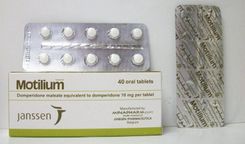This is an automatically translated article.
Cinoxacin is an oral quinolone antibiotic that is active against a wide range of aerobic Gram-negative bacteria. So what is Cinoxacin and how is it used?1. What is Cinoxacin?
Cinoxacin is a quinolone antibiotic used to prevent and treat urinary tract infections. It has no effect on other viral or bacterial infections.
Cinoxacin is only available with a doctor's prescription. This medicinal product is indicated for the treatment of primary and recurrent urinary tract infections in adults caused by the following susceptible organisms: Proteus mirabilis, Escherichia coli, Proteus vulgaris, Klebsiella species (including K.pneumoniae) and Enterobacter species.
2. How does Cinoxacin work?
Cinoxacin is a synthetic antibacterial agent with in vitro activity against many gram-negative aerobic bacteria, especially strains of the Enterobacteriaceae family. Cinoxacin inhibits bacterial deoxyribonucleic acid (DNA) synthesis, is bactericidal, and acts over the entire urinary pH range. Cross-resistance to nalidixic acid has been demonstrated.Mechanism of action: There is evidence that Cinoxacin binds strongly, but reversibly, to DNA, interfering with RNA synthesis and with protein synthesis. Cinoxacin also appears to inhibit DNA gyrase, an enzyme required for proper cleavage of replicated DNA. Through the inhibition of this enzyme, DNA replication and cell division are inhibited.
Absorption of Cinoxacin: This drug is rapidly absorbed after oral administration. Although concomitant food intake may slow absorption of the drug, the total extent of drug absorption is not affected.
3. How to use Cinoxacin?
Patients should tell their doctor if you have a history of allergic reactions to this or other Quinolone antibiotics. Because Cinoxacin has been shown to cause problems with bone development in young animals, the use of Cinoxacin is not recommended in children under 18 years of age.
Other past or current medical problems that may affect the use of Cinoxacin . Make sure you tell your doctor if you have a history of:
Brain and spinal cord disorders Seizures Tendonitis - worsening of the condition Kidney disease because of possible increased risk of side effects Dosage Cinoxacin drugs are different in different patients. Your doctor will specify the dose, frequency of use, and duration of use in accordance with your health condition.
The dosages below are for reference only, with the capsule dosage form of Cinoxacin:
For the prevention of urinary tract infections in adults, take 250mg before bed for up to 5 months. For the treatment of urinary tract infections in adults 250mg every 6 hours; or 500 mg every 12 hours for 7-14 days. Check with your doctor again if symptoms do not improve within a few days or get worse.
Weigh the benefits and risks when using this medicine for pregnant women or people who are breastfeeding.
Use caution when using this medicine for people who drive, operate machinery, or are performing some dangerous work that requires high concentration.
Cinoxacin may cause some people to become more sensitive to sunlight than usual (severe sunburn, skin rash, redness, itching, discoloration, vision changes). If possible, after taking Cinoxacin:
Limit your exposure to direct sunlight as much as possible Wear protective clothing Apply sunscreen If you have severe reactions to the sun , see your doctor for help.
If you miss a dose of this medicine, take it as soon as possible. However, if it is almost time for your next dose, skip that dose and take it as usual. Do not double dose.
In case of overdose Cinoxacin may appear symptoms such as: nausea, vomiting, loss of appetite, diarrhea, epigastric pain, epigastric pain and diarrhea depending on the dose taken. In addition, some symptoms such as insomnia, photophobia, headache, dizziness, photophobia, tinnitus were also reported in some patients.
Keep your medicine out of reach of children, in a tightly closed container in a cool place, away from moisture, heat and direct sunlight.
4. Some drug interactions of Cinoxacin
Drug interaction is the interaction between drugs, with Cinoxacin some interactions may occur with other drugs such as:
Acarbose: The therapeutic effect of Acarbose can be increased when used in combination with other drugs. Cinoxacin Aceclofenac: may increase the neuromodulatory activities of Cinoxacin. Acemetacin: May increase the neuromodulatory activities of Cinoxacin. Acenocoumarol: The therapeutic efficacy of Acenocoumarol can be increased when used in combination with Cinoxacin. Acetaminophen: The metabolism of Acetaminophen may be reduced when combined with Cinoxacin. Acetylsalicylic acid: may increase the neuromodulatory activities of Cinoxacin. Acyclovir: The metabolism of Acyclovir may be reduced when combined with Cinoxacin. Albendazole: The metabolism of Albendazole may be reduced when combined with Cinoxacin. Alimemazine: The risk or severity of QTc prolongation may be increased when Alimemazine is combined with Cinoxacin. Aluminum hydroxide may reduce the absorption of Cinoxacin, resulting in decreased serum concentrations and potentially decreased efficacy. Amoxicillin: The serum concentration of Cinoxacin may be increased when it is combined with Amoxicillin. Azithromycin: The risk or severity of QTc prolongation may be increased when Azithromycin is combined with Cinoxacin. Atropine: The risk or severity of QTc prolongation may be increased when Atropine is combined with Cinoxacin.
5. Cinoxacin side effects
Not all side effects are possible and they also have different frequencies:
Less common side effects:
Skin rash, redness, itching, swelling More common:
Diarrhea Loss of appetite Nausea Stomach cramps Vomiting Rare:
Black stools Bleeding gums Blood in urine/faeces Dizziness Headache Skin increased sensitivity to sunlight Unusual bruising or bleeding Incidence unknown:
Bone pain Lower back pain/pain on one side Inflammation, swelling, pain in legs, shoulders or hands Pain, swelling of joints Convulsions Other side effects not listed here may also be present. occurs, if you notice any other undesirable effects, consult your doctor for advice.
Follow Vinmec International General Hospital website to get more health, nutrition and beauty information to protect the health of yourself and your loved ones in your family.
Reference source: drugs.com













